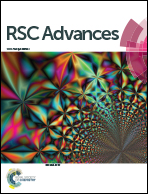The effect of solid content on the rheological properties and microstructures of a Li-ion battery cathode slurry
Abstract
The development of new materials and the understanding of the microstructure formation of electrodes have become increasingly important for improving Li-ion battery performance. In this study, we investigate the effect of solid content on the rheological properties of and the microstructures in the cathode slurry prepared from Ni-rich materials. With long-chain structures, PVDF molecules can change their configurations when they come into contact with the solid particles in slurries, and their bridging function can change with the solid content in the slurry. Below the optimum content, particle sedimentation easily takes place. Above the optimum content, excessive yield stress is created in the slurry, and this stress is not conducive to homogeneous distribution of the components. The rheological properties of the slurries vary greatly under different solid contents. We investigated the uniformity and stability of the slurry prepared from Ni-rich materials and found that the most suitable solid content of the slurry lies in the range from 63.9% to 66.3%. Our work might assist in the production of high-performance Li-ion batteries that are made using an electrode slurry.



 Please wait while we load your content...
Please wait while we load your content...